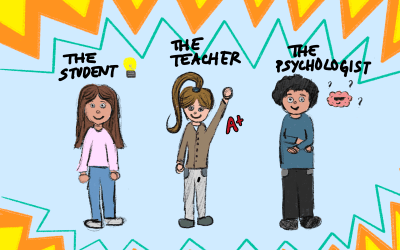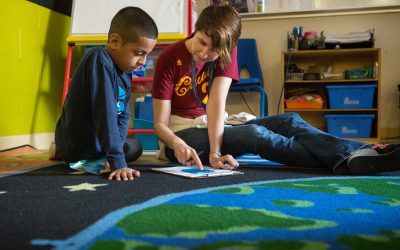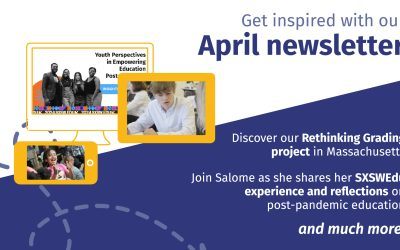As we all begin to imagine what the fall will look like, one of the big questions in many of our minds is how to build relationships with learners in a world where remote learning is almost certain to be part of school life. If your program is willing to think outside the box of bell schedules, and stacked periods, here are some of the ideas we’ve been playing around with at reDesign.
Grouping Adults and Young People: Small Groups, Focused on Support and Development
Group each learner with up to 25 peers and 1 or 2 teachers: in elementary school, this is a single class. In middle and high school, these might be home rooms, or any other non-academic grouping of students.The core purpose of the group is to ensure that every learner is part of a caring community of peers and adults. Meetings in the group are to support positive child and youth development, to create a sense of community, and to ensure that every young person has access to an adult who will be their advocate: a “primary person” who is looking out for them. At EL Education, this group is called “crew” (as in “we are all crew” on this boat, no one is a passenger: we are here for each other on this journey, and we all have a critical role to play). At Schools for the Future there are two supports: Advisory and PACT. At Bronx Arena High School, the groups are called Arenas: a four hour block of time each day that is a combination of self-paced digital learning, and social-emotional support. Each Arena is staffed with a youth development facilitator and a teacher: an incredible easy structure to export to a remote learning context.
In each of these models, groups meet regularly (daily, or multiple times a week), to set goals and discuss obstacles, to play games, to eat lunch together, to share dreams and make plans, to check in on academics: to be an anchor at school. When adults do this well, these relationships become strong enough that when young people have trouble outside of school, they will bring it to their adult supporter, making it more possible for the school to offer care and interventions, as needed.
Ways that Adults Can Get to Know the Young People in their Group
TIP #1. One-on-one teacher-learner meet-ups:
The most basic and powerful way to connect to another person is to listen. Just listen. Perhaps the most important thing we ever give each other is our attention…A loving silence often has far more power to heal and to connect than the most well-intentioned words.
–Rachel Naomi Remen
- Begin the school year with either an in-person or a remote 1:1 meeting, and conduct an empathy interview: the goal is to really get to know the student in a small, but meaningful way.
In-person meetings could be modified home visits: meet on the young person’s stoop, or on the sidewalk outside their apartment building. Go for a socially distant walk. Or, bring 2 frisbees to a park, place them 6 feet apart, and each of you sit on one for a chat. Include a parent if they would like to join. Repeat these 1:1’s several times during the school year: preferably every 2-3 weeks, so adults in the school are making sure every young person feels known and valued, and ensuring that students aren’t “dropping out of sight” without someone checking in on their well-being.
- Collaborate with each learner to create a learner profile: an opportunity for young people to document who they are, what their strengths and challenges are, their goals, their accomplishments and their plans.
The best Learner Profiles are living, dynamic documentation efforts that allow learners to share their growing competency, over time. Find a Learner Profile focus and template that supports your own view of what should be included in a Profile (2 blog posts with examples: Exploring Learner Profiles; Getting to Know You: Learner Profiles for Personalization). When you meet with students 1:1 work on the profile together, or ask them to prepare some of the aspects of the profile in advance, and share them with you!
TIP #2. Small group meet-ups: Divide your group into smaller groups of 5-6 (perhaps geographically, so that the 5-6 students live near each other), and organize small group “meet-ups,” remote or in-person.
Buy enough frisbees, or rug squares, or garden chairs for the group. While the weather is nice, meet in a field, playground or park: on school property or in a location near the homes of the 5-6 students. Plan a simple game, getting-to-know you activity, or read-aloud. If it rains on the day you planned, meet virtually instead, and plan another in-person opportunity for a couple of weeks in the future. These can be permanent small groups, or flexible ones, but the goal is not to organize them around academics, but rather, more intimate opportunities to get to know young people as full human beings. These relationships are what will help students feel connected to each other and you, so that when academics are the focus of meetings, you have created a place of intellectual and emotional safety to support learning.
TIP #3. Ask each learner to take a picture of themself without a mask—smiling if possible—and email it to you. Print it out, laminate it, put it on a string or lanyard. Do the same for yourself.
When you are meeting in-person with young people, have everyone wear the picture, to remind each other of who you really are, under the masks. Healthcare professionals are doing this in hospitals, and it’s been very positive for patients of all ages.
TIP #4. Make masks with learners.
Buy fabric paints and pens, so that both you and your students can make the masks representative of who you are, what’s important to you, and what you are passionate about.
TIP #5. Adult Supporter Connections: Reach out to an adult in each learner’s life: a parent or guardian, or another adult supporter whom the learner trusts and loves.
Introduce yourself and undertake an empathy interview: learn about their life, what they love about your student, what they feel are her strengths and challenges, what they want you to know about themself and their young person. Ask them if you can call each month to check-in and chat about the young person they love. Ask if it’s okay to send texts every so often, with news of what their young person is doing in class. Ask if they would be willing to send occasional texts letting you know how she is doing at home: not just with schoolwork, but in her life. Build a trusting relationship: one in which the adult supporter is your partner in teaching and in the development of a healthy, thriving young person.
ADDITIONAL RESOURCES TO EXPLORE
- Bronx Arena Multimedia Monograph. 2016. reDesign. Retrieved on July 14, 2020, from https://issuu.com/antoniarudenstine/docs/bronx_arena_high_school_monograph_a
- CASEL Program Guides: A review of SEL Programs. Retrieved on July 14, 2020, from https://casel.org/guide/.
- Designing Advisory Systems: Innovative Approaches for High Schools. Springpoint: Partners in School Design. Retrieved on July 14, 2020, from https://www.springpointschools.org/media/2018/10/Springpoint_Designing-Advisory-Systems_10.9.18.pdf
- Implementing Learner Profiles. The Learner Accelerator. Retrieved on July 14, 2020, from https://practices.learningaccelerator.org/strategies/implementing-learner-profiles.
- Navigating SEL from the Inside Out: Elementary Focus (includes profiles of a number of programs). 2017. Retrieved on July 14, 2020, from https://www.wallacefoundation.org/knowledge-center/Documents/Navigating-Social-and-Emotional-Learning-from-the-Inside-Out.pdf.
- The Future of Children. 2017. Princeton and Brookings. Retrieved on July 14, 2020, from https://www.wallacefoundation.org/knowledge-center/Documents/FOC-Spring-Vol27-No1-Compiled-Future-of-Children-spring-2017.pdf.
- Virtual Crew. EL Education. Retrieved on July 14, 2020, from https://eleducation.org/resources/collections/virtual-crew
Join the community!
Sign up to receive our newsletter, access best-of educational resources, and stay in the know on upcoming events and learning opportunities. We hope to see you soon!




